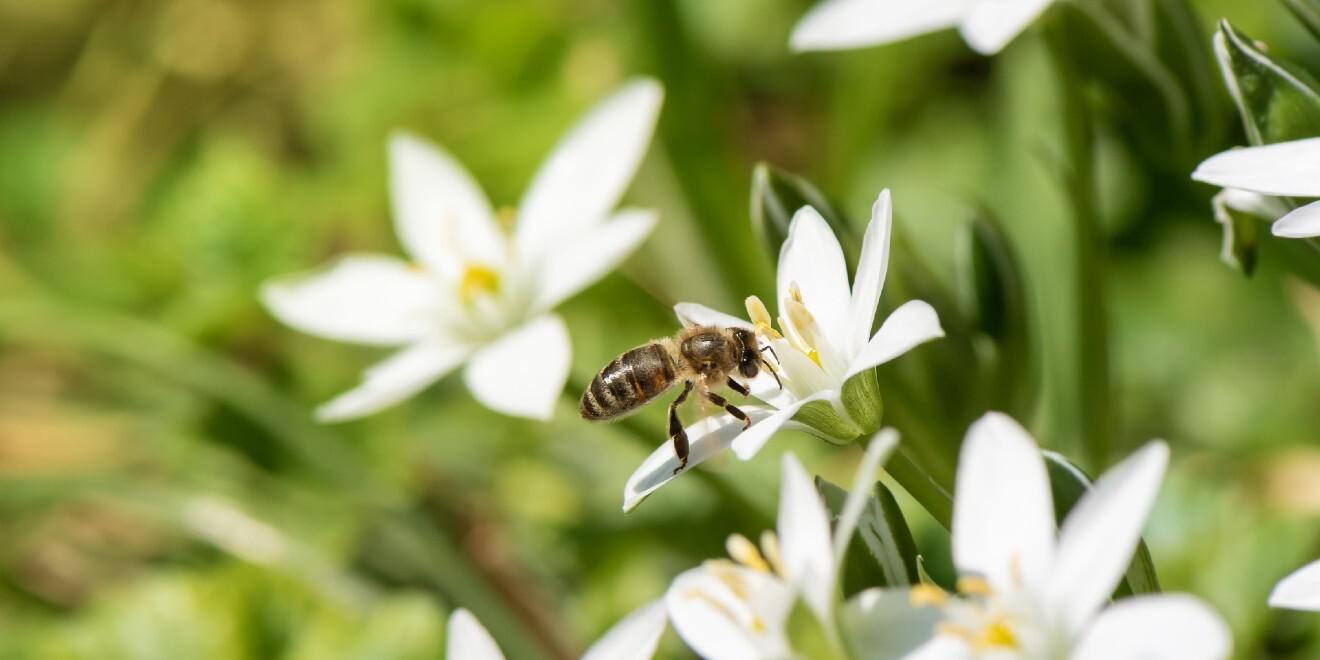Natural Wasp and Bee Sting Treatment Methods to Try at Home
Posted by Mosquito Squad
August 22, 2025

You’re casually enjoying a walk or gardening when suddenly you feel a painful prick. Bee and wasp stings inject venom that causes soreness and itching. Natural home remedies can provide soothing relief with ingredients you likely already have! If you’ve been stung and need quick treatment, try these DIY methods to treat a wasp or bee sting.
The first step is understanding what insect you’ve been stung by, since treatment varies depending on the assailant.
What Does a Wasp Sting Look Like and Feel Like?
A wasp sting typically causes sharp, immediate pain followed by redness, swelling, and a raised welt. Some people may also experience itching, burning, or a warm sensation. In more sensitive individuals, wasp sting swelling can spread beyond the sting area. Wasps have smooth stingers and can sting multiple times.
Read more: The Differences Between Bees, Wasps, and Hornets
What Does a Bee Sting Look Like and Feel Like?
The biggest difference between a wasp and bee sting is that some bees leave behind a stinger. Honeybees and some other species can only sting once because their stingers have barbs that become lodged in your skin. If you’re stung, check for a black stinger at the center of the sting. If you spot one, promptly remove it using the methods below. Stingers continue to release venom until they are removed.
A bee sting usually appears as a small, red bump with a visible puncture mark at the center. The area around the stinger will be surrounded by redness and feel warm. Bee sting swelling typically happens quickly after you’re stung. In some cases, a white spot or welt may form around the site of the sting.
How to Remove the Bee Stinger
If you see a black stinger at the center of the red bump, it needs to be quickly removed. For bee stinger removal, use a flat-edged object like a credit card to scrape the stinger out, or pull it out gently with a pair of tweezers. While it’s rumored that squeezing the stinger with tweezers releases more venom, a recent study found that there isn’t a significant difference in venom released from the two methods. The best removal technique is the one you can do the fastest. Once the stinger is out, clean the area with soap and water; then try a home remedy for bee stings from the list below.
How to Treat a Wasp Sting or Bee Sting Naturally
Bee stings are acidic, so they should be neutralized with a basic solution:
- Baking soda paste – Mix baking soda with water to form a paste. Apply it to the sting site to neutralize the venom and reduce inflammation.
Wasp stings are basic, so they should be neutralized with an acidic solution:
- Apple cider vinegar – Tap the sting site with diluted apple cider vinegar to reduce itching and swelling.
- Diluted lemon juice – Just as effective as vinegar, this is a good home remedy for wasp sting venom.
These natural remedies for wasp stings or bee stings soothe pain and reduce inflammation, regardless of the offending insect:
- Honey – Honey has antibacterial and anti-inflammatory properties; a dab of honey will soothe the sting and speed healing.
- Aloe vera – Apply pure aloe vera gel to cool the area.
- Cold compress – Apply a cold pack or a cloth soaked in cold water to reduce pain and swelling.
- Witch hazel – Known for its anti-inflammatory properties, witch hazel soothes skin and reduces redness. Dab it on periodically.
It’s often sufficient to use home remedies for wasp stings or bee stings until the pain clears up. However, if symptoms worsen or there are signs of an allergic reaction, seek medical attention immediately.
Signs of a Wasp or Bee Sting Allergy
While most bee and wasp stings cause mild, temporary reactions, some people experience allergic reactions ranging from moderate swelling to a severe, life-threatening state of shock known as anaphylaxis.
Common wasp and bee sting allergy symptoms include:
- Swelling beyond the sting site
- Hives or rashes that spread across the body
- Difficulty breathing or shortness of breath
- Tightness in the chest or throat
- Rapid heartbeat
- Dizziness or fainting
- Nausea and vomiting
If any of these symptoms appear, get immediate help. People with known sting allergies often carry an EpiPen to use in emergencies. Even after using an EpiPen, you should still visit a doctor, as symptoms may worsen. If you are unsure whether you (or a loved one) have an allergy or not, monitor the reaction for at least 30 minutes after a sting.
The Best Way to Prevent Future Stings – Professional Treatment
While natural remedies can soothe a sting after it happens, the best way to avoid the pain is with preventative wasp treatments for your yard. Wasps are territorial and can become aggressive when their nests are disturbed. If you’ve noticed an increase in wasp activity or a nest near your home, professional wasp treatment is the safest and most effective solution for controlling wasps.
At Mosquito Squad Plus®, we strategically target wasps and ideal nesting areas while avoiding areas where pollinators may thrive in your yard. Our pest control professionals identify and safely remove nests before applying a spray that helps deter wasps for up to 21 days after treatment.
Take a proactive approach to protecting your loved ones from stings. Call your local Squad® at (877) 332-2239 or request a cost-free quote online.
